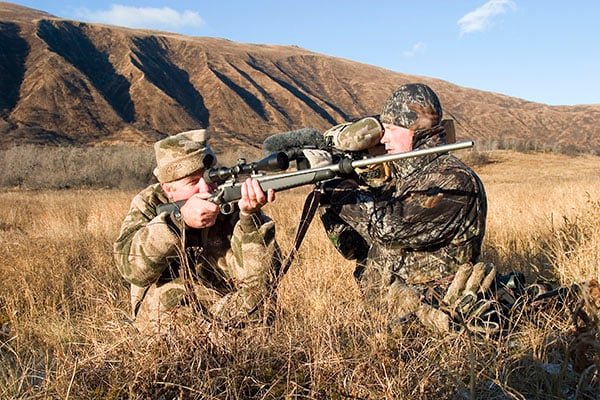
Last Updated on
By Guy J. Sagi
Hunters often find themselves dealing with varied terrain and wrestling through thick brush that makes delivering an accurate, single-and-humane shot a challenge. Yet, many of us restrict our practice to a comfortably seated bench with the rifle anchored solidly in a rest or on sandbags, commodities never seen on a remote hunt. It’s a mistake that can cost you the trophy of a lifetime—I know.
A bull elk is still on my bucket list, and I can only blame myself. The last time I drew tags a heavy snowstorm blew in, and on the final day of my season—just before dusk—a decent one walked across a ridge below. Any shot was going to be long from my position, but the heavy-duty tripod and solid mount we packed in to steady the gun was confidence building.
There was a bone-chilling breeze, but the .308 Win. wasn’t going to be in flight long enough that I had to be scientifically accurate in doping the wind. I was using a LaRue Tactical Optimized Battle Rifle, so I also can’t blame the gun or rest.
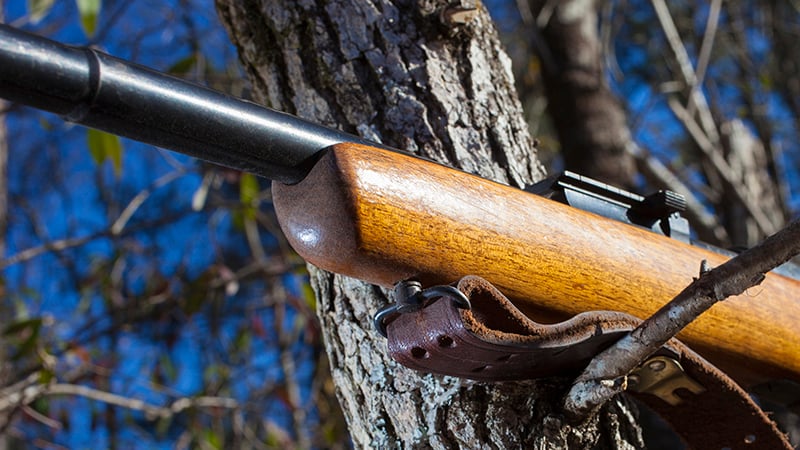
The mountainside I sat on towered over the elk’s location. When I swung the rifle and scope down to finally get it into the field of view, the angle was steep, maybe 50 or 60 degrees. I stood up and was too high to see through the optic. Then I knelt and was too low. No rocks or logs were nearby, so I resigned myself to a half squat/knee bend as I sighted and waited for the breeze to die. I squeezed the trigger, mid-shake apparently, because it was a clean miss.
That horror story was enough to convince me to practice some different positions before every opening day. That’s not to say I’ve become a Ninja range contortionist, but I do challenge myself physically and mentally enough to become comfortable, confident and proficient, even when conditions aren’t quite perfect.
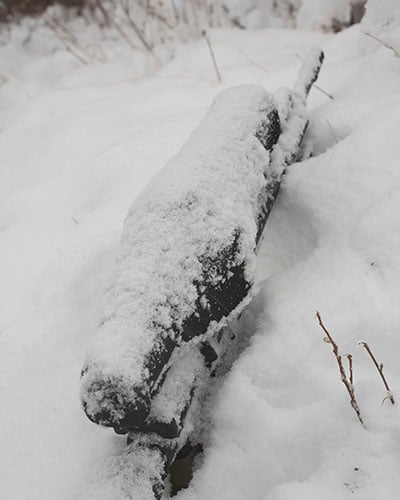
Prone
There’s really nothing unconventional about this position when it comes to long shots, except for the fact a lot of hunters don’t practice it. The military invests long hours in training recruits how to lay on their bellies to deliver accurate fire. Thankfully, a former SOCOM member convinced me I needed to hone this skill only a few months before I had to press it into service on an antelope hunt. Taking that “goat” at long distance, on another snowy day after a long belly crawl, is one of my favorite outdoor memories.
It’s not comfortable at first. Everybody’s frame is slightly different, so precise leg and chest positions that work for one person feel like water boarding for another. Get down there, and adjust slightly until you find that survivable sweet spot.
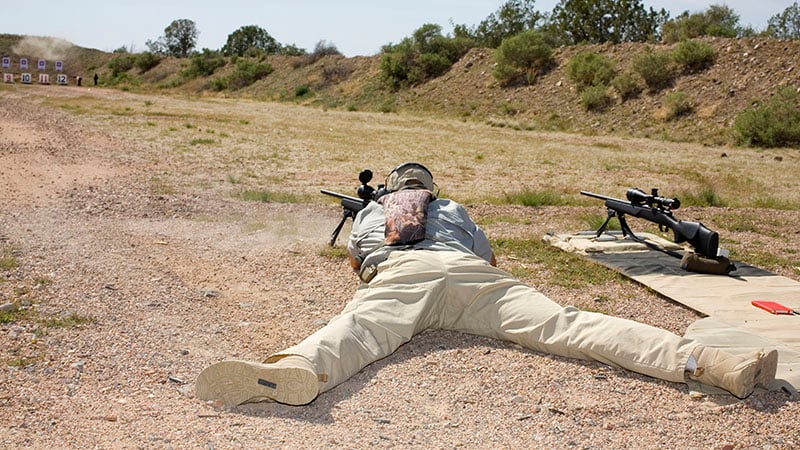
There are some things you should always be doing to maximize your stability, though. Spread your legs widely apart to anchor. Your heels should not be up, so flatten your feet on the ground. The more contact surface with the unmoving earth, the more accurate your platform. Larger shooters may need to bend a knee slightly to regulate breathing. Go ahead, it’s done in some competitions all the time, but get the other leg out and try to go flat and wide.
Find a comfortable spread between your elbows that allows you to see through the scope properly and minimize waver. Wider is usually better, but too far apart and getting a good sight picture without undue reticle movement can become a problem.
Consider a bipod. It’s amazing how applying a little forward pressure on that pair of spindly looking legs can rival the stability of shooting from a sandbagged rest.
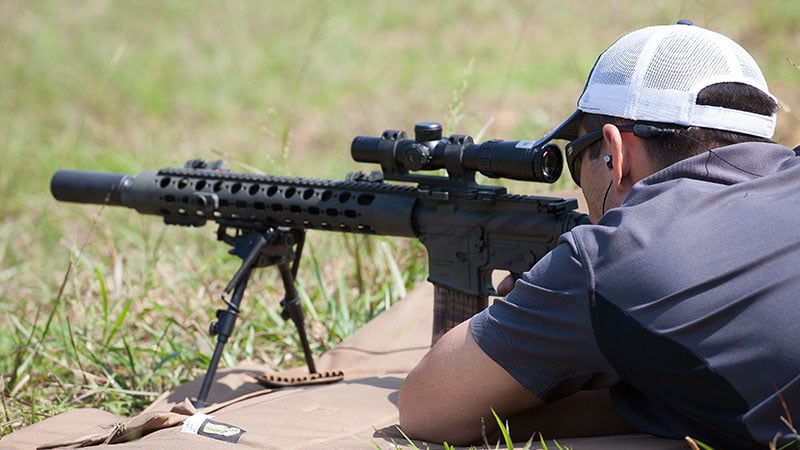
Sitting/Kneeling
Both sitting and kneeling are also conventional for competitive shooting, but not exactly routine with hunters. The key to both is locking elbows to relatively unmoving knees/legs, and that isn’t done when hard bone rests on hard bone. Try the inside or outside of your elbow against the kneecap, or funny bone on the tissue behind it. Everyone’s different, so blanket advice isn’t always good advice. Grab an unloaded gun and experiment on your living room floor with this technique and prone.
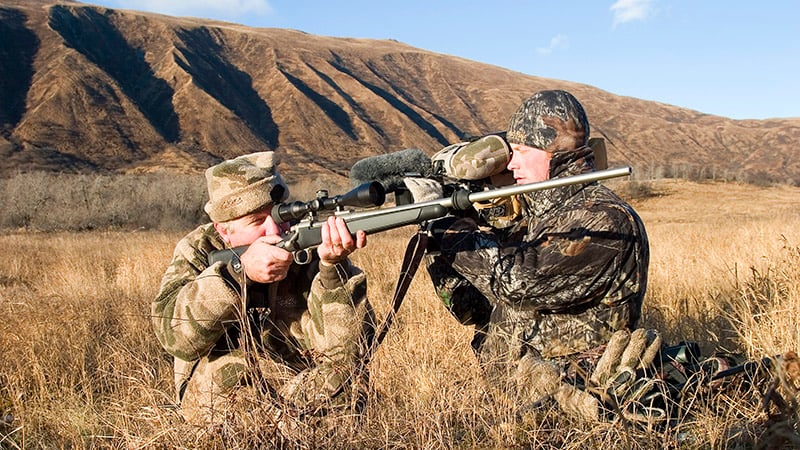
Mother Nature’s Aids
I found out the hard way during a whitetail hunt that bipod use isn’t always possible, even on flat or gently sloping terrain. The legs sank too deep in the snow the moment I dropped to the prone position.
I snuck to a nearby tree, sat down and pressed the rounded AR-10 fore-end against the ice-covered bark. I had a sight picture, but the “rest” was hockey rink slick. So, I spotted a branch above, waited until the deer had its head down before I stood up, and used it for the shot’s stability.
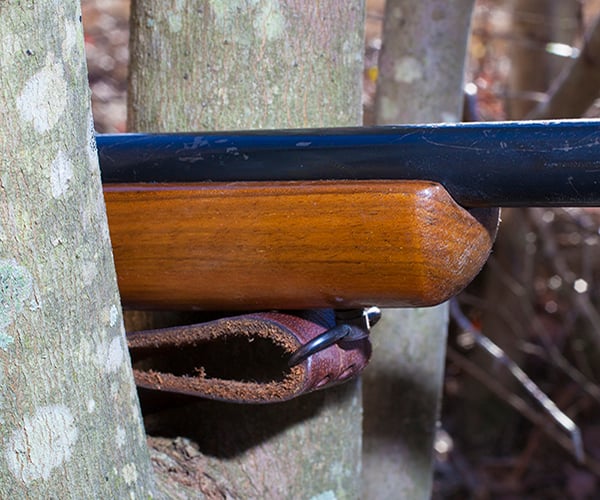
Nature provides plenty of alternative rests, but you’ve got to remain aware when they’re there. Situational awareness isn’t exclusive to self-defense.
If you’re going to put the rifle across a branch, bear in mind, though, only the fore-end and/or your fingers should make contact. Even the slightest pressure on some barrels can alter a bullet’s point of impact, and at long distance the difference can be significant.
Forks in trees are extremely stable, if you’re lucky enough to find one. You can also drive your hunting knife into the bark and use it as a rest, but that requires time and movement that can alert your quarry. The lack-of-barrel-contact rule applies, regardless of the approach.
Similarly, enlist the aids of logs, rocks, mounds of dirt and piles of deadfall for stability. Don’t be shy about moving things around either—if you can without giving away your position. Find a diving rod-shaped broken branch (y-shaped), drive it into the ground, place your fore-end in the junction of the branches, and it’s a great monopod.
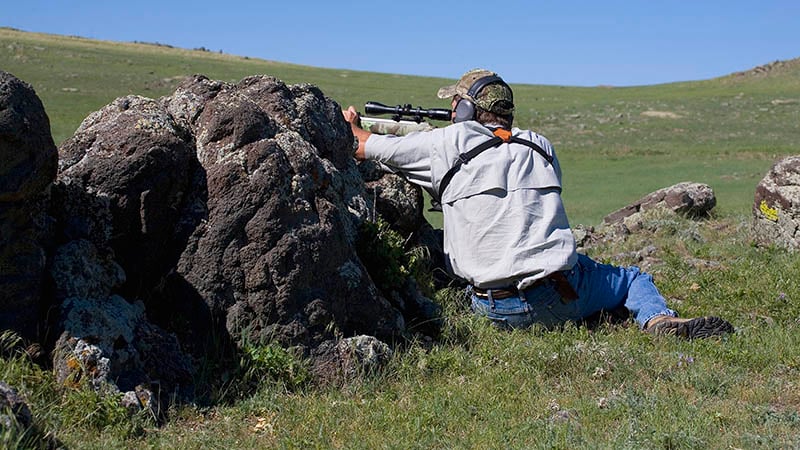
Manmade Improv
Toss your backpack or coat on a rock to add elevation or stability—behind the muzzle, of course. Bunch it up, or stuff the latter into the former and now you can work from a different height.
That extra padding usually makes things a little less rickety, too. Add the fact that also minimizes scarring on your firearm, and it’s a good habit to get into when you have the time. In a hurry, you can put your sling between the gun and natural object, but make sure the swivel isn’t the part making contact or you’re back to that hockey rink.
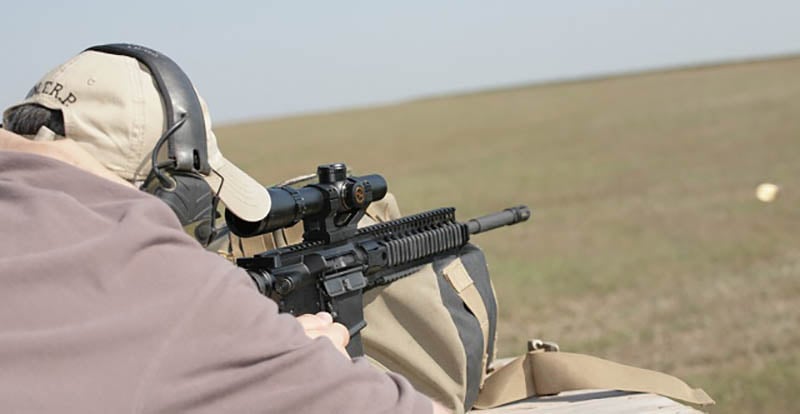
Hunting Blinds
I’ve yet to meet an AR-friendly hunting blind. Even if you have one of the unicorns, determine which of the stays stabilizes the gun well and ensure your seat is positioned for proper eye relief. Shooting sticks, a forked stick of about the right size or a cheap camera tripod are regular companions when I walk in.
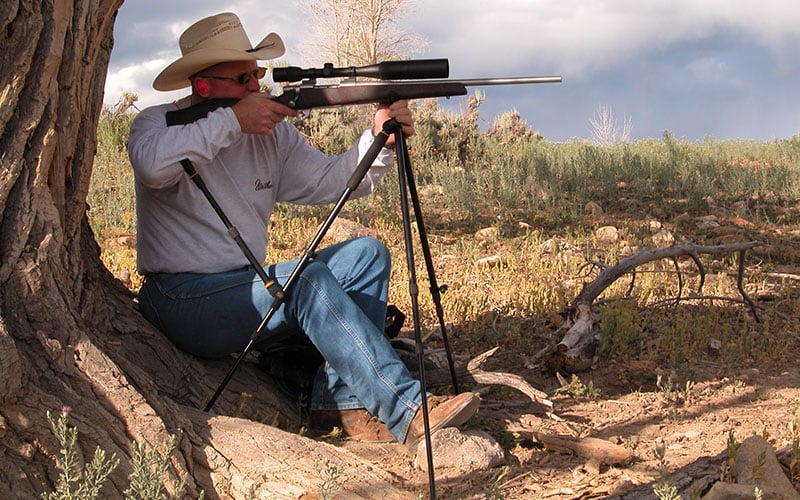
Restricted
Regardless of the position being practiced, safety is first and foremost. Bear in mind, too, some ranges will not allow you to shoot from unconventional positions. Ask, although I doubt any will be thrilled about you driving a hunting knife into one of their posts.
Some, however, won’t have a problem with prone, sitting or kneeling shots so long as you don’t cross the firing line when the range is hot. Using a backpack as a sandbag shouldn’t be any problem at all. Stuff it with the gear you’ll probably be taking, though, so you’re not surprised when forced to adjust for the binoculars you keep in a particular outside pocket.
Lesson Learned
For three days—eight hours each—I waited for that elk to wander onto that ridgeline. I had plenty of time to analyze potential problems, but I was so engrossed in the worsening weather and scouring the countryside that I didn’t.
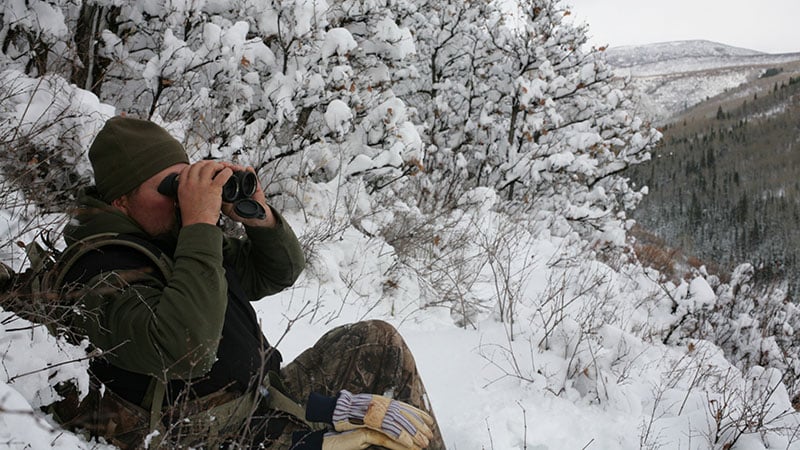
I could have quickly detached the rig from the tripod, assumed a sitting position and hit the mark—hindsight’s 20-20, though. There were also plenty of low-lying branches to work from. Don’t make the same mistake. Look around when you’re hunting, and determine the best rest from multiple positions to maximize your chances of making that good, clean first shot. If not, it could be the trophy of a lifetime you miss.




Leave a Reply